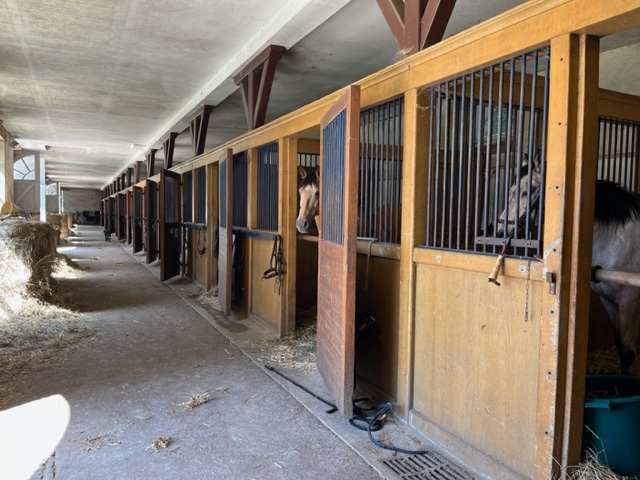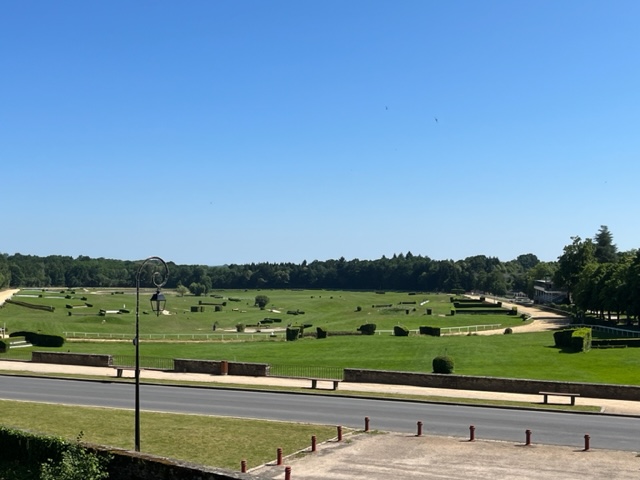How Louis XV’s Mistress Founded one of France’s Most Successful Stud Farms
Madame de Pompadour, King Louis XV’s mistress and confidant, founded the Haras de Pompadour, which contributed to the excellent reputation of the Limousin horses.
‘Sire. Pleased to finally meet you.’
While we cannot be sure whether this is the exact phrases Madame de Pompadour used when she created a chance encounter for Louis XV to spot her at the hunting ground, from the start their love story is inextricably linked with prized horses and the enduring history of Château de Pompadour. The château is located in the Corrèze, in the Limousin region of France, not too far from Bordeaux and Toulouse by car.

The Marquise de Pompadour painted by François Boucher in 1756
That fateful year was 1744. Aged 23, Jeanne-Antoinette Poisson (as she was then known) was already a married woman with a young daughter. Only three years previously, Jeanne had married the nephew of her wealthy guardian. The young couple moved to Château d’Etiolles, just outside Paris, close to the royal hunting ground. As a well-educated married woman, she had access to the salons which were very much in vogue at the time. At these salons, prominent figures in Paris hosted meetings where they would discuss art, literature, philosophy and culture. Jeanne acquired invaluable social skills and made the acquaintance of the cultural elites. This would later prove instrumental to her success at the royal court. We suspect that Louis XV had probably already heard of Jeanne thanks to her beauty and prominence in the Parisian gatherings.
But the two had to wait a little longer to meet. Following a royal hunting party near Château d’Etiolles, Jeanne took matters into her own hands and drove her carriage directly in front of the King wearing flamboyant clothing to catch his eye. These tactics clearly worked, as she was later invited to a masquerade ball held at Versailles in February 1745—and the rest is history.

The boudoir © Elisabeth Cheung
Main mistress
While Louis XV had many mistresses, he had only one chief ‘Official Mistress’ at any given time. Determined to be with the King, Jeanne separated from her husband and sent her daughter away to be cared for elsewhere. As a testament to her perseverance, she mastered the highly mannered court etiquette and made efforts to build a good relationship with the royal family, particularly with the Queen. But there was one last obstacle; in order to be elevated to the position of Official Mistress, she needed a title. The King came up with a clever solution. He bequeathed her the beautiful Château de Pompadour in Limousin, in southwestern France, thereby granting her a new title of nobility at the same time – the Marquise de Pompadour – which is why she was most commonly referred to as Madame de Pompadour.
In the summer of 1745, Jeanne’s fate was sealed when she was given the title of Official Mistress. Her education, her charm and her life experience enabled her to entertain and challenge the King intellectually. As time went by, she became way more than a mistress. She wielded considerable power in the court’s appointments and dismissals as well as in foreign affairs, thus serving a role not too dissimilar to that of a prime minister. She forged a strong bond with Louis and became his confidant, which sets her apart from the other mistresses and even the Queen. So much so that even after their relationship turned platonic, Madame de Pompadour still enjoyed the position of ‘friend of the King’, and Louis XV remained devoted to her and treasured her companionship. She was elevated to the rank of duchess and became a lady-in-waiting to the Queen, the noblest rank possible for a woman at court. She remained at Versailles until her death aged 42.

Horses in training at the Haras de Pompadour © Elisabeth Cheung
From medieval castle to royal stud farm
A visit to the Château de Pompadour is an excellent way to explore the enduring legacy of its former owner, Madame de Pompadour. The story of the château begins in 1026, when the medieval castle was built and then changed hands numerous times until, in 1745, King Louis XV rebuilt and bequeathed it to his favourite mistress. At that time, thousands of horses had died on the battlefields, so the couple decided to develop a stud farm on the estate, dedicated to breeding and dressage to ensure the remount of the army without the need for importation from abroad. The stud farm quickly became one of the largest national depots and was capable of supplying the court and cavalry with saddle horses. The reputation of the Limousin being the Royal Court’s horse breeding ground was thus sealed. To this date, the stud farm remains the most prized possession of the château.
The 18th century was the golden era for the local Limousin breed. Many praised the superb qualities of the Limousin horses: endurance, finesse, agility, beauty; making them the court’s favourite mount. But repeated military demand during the Napoleon era between 1813 and 1815 virtually wiped out the breed. At the instigation of the stud farm’s successive directors, the Limousin breeds were replaced by Anglo-Arabians. These came from crossbreeding English thoroughbred and Arabian horses. When equestrian sports were developed in the 20th century, Anglo-Arabian horses—particularly those from Pompadour—acquired an outstanding sports reputation in every area, especially in obstacle jumping and dressage. Further, the stud farm of Pompadour ( Haras de Pompadour) was elevated to the rank of National Stud Farm in 1872, making it the second largest breeding facility in France.

The château’s stables © Elisabeth Cheung
A treasure of Rococo architecture
To keep the King entertained, Madame de Pompadour invested heavily in decorating the interior of her residences and surrounded the King and herself with luxury objects. A type of decorative arts, known as the Rococo style, was created during Louis XV’s reign. Its elegant features are characterized by curved lines, golden and pastel colors and ornamentation in the form of shells and flowers.
Unfortunately, most of the interior of the château was demolished during the French Revolution and then, by a major fire in the 19th century. These incidents make it hard to spot remains of the impressive Rococo decor.
Today, only the south wing of the castle remains. From the exterior, imposing round towers give hints to its former glory. Inside, visitors will find exhibitions of exquisite objects such as Aubusson tapestries, Limoges porcelain, as well as information about horses, from traditional outfits to stud-books, to help them learn more about the world of horses.
With its stables, sprawling garden and horse-carriage exhibition as well as the racecourse nearby, the Château de Pompadour is an ideal day trip destination for families and couples. Located opposite the castle car park stands the Puy Marmont equestrian stadium, where many horse-riding and show-jumping competitions take place. While equestrian events lie at the heart of the city of Pompadour, they reach a crescendo on August 15 annually, known as the Journée du Cheval. Plan ahead to join the locals to watch one of the Saint-Hubert masses, show jumping, horse races, demonstrations and equestrian shows.
Madame de Pompadour’s rise to power and influence was unprecedented for a woman of her time. She was truly a force to be reckoned with, and her legacy was partly owed to Château de Pompadour and its enduring national stud farm which she founded.

The equestrian stadium opposite the castle © Elisabeth Cheung
Lead photo credit : The impressive Château de Pompadour © leoks / shutterstock
Share to: Facebook Twitter LinkedIn Email
More in Château, equestrian, French history, King Louis XV, Limousin, Madame de Pompadour
Leave a reply
Your email address will not be published. Required fields are marked *






REPLY